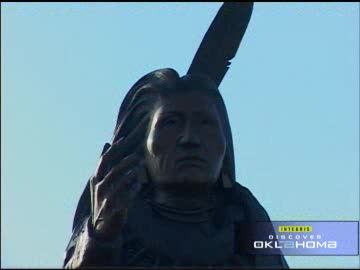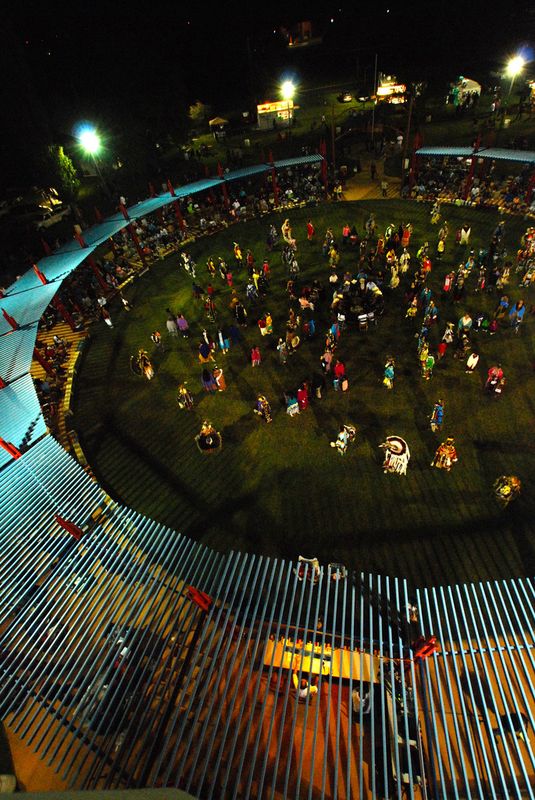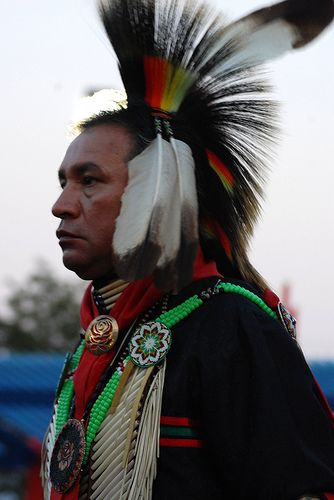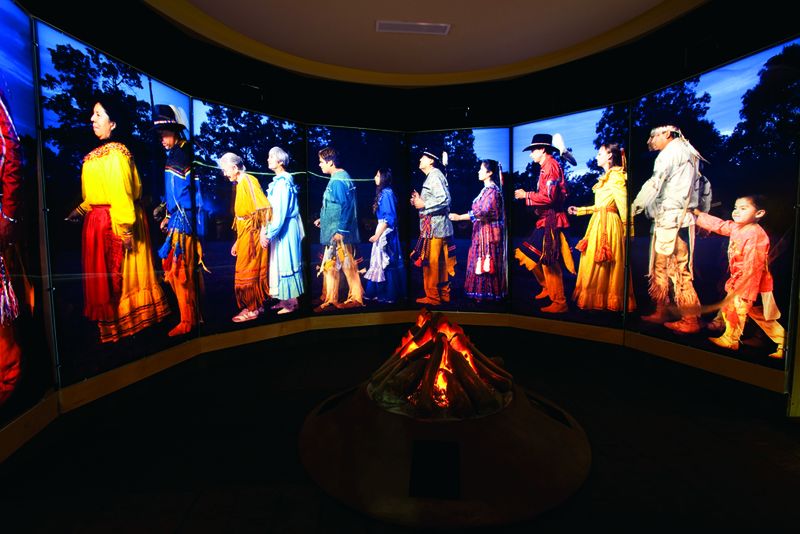Step into Oklahoma’s Indian Country and enter a world that moves to a different rhythm, where the quiet sway of ancient wisdom and modern-day renaissance is woven through the stories you hear and the cultures you’ll experience. You’ll discover that each of Oklahoma's tribes has a unique and complex character that transcends time. American Indian culture is alive and well in Oklahoma, Native America.
Washita Battlefield National Historic Site, Cheyenne
Nestled beneath beautiful red hills near Cheyenne in western Oklahoma, the Washita Battlefield National Historic Site is one of three sites in Oklahoma administered by the National Park Service. The visitor center interprets the tragic circumstances of Lt. Col. George Armstrong Custer’s surprise dawn attack against the Southern Cheyenne village of Peace Chief Black Kettle on November 27, 1868.
Inside the center, the film “Destiny at Dawn – Loss and Victory on the Washita” and other exhibits commemorate one of the most significant events in the tragic clash of cultures during the Indian Wars era. Outside, two interpretative walking trails give guests more insight into Cheyenne culture. The half-mile, paved Dust and Fire Trail features a Native Garden with plants and herbs traditionally used by the Cheyenne people. Visit the location of Lt. Col. Custer's attack on Chief Black Kettle's village on the 1.5-mile Washita Battlefield Park Trail, then reflect on the informative experience at the park overlook, boasting impressive views of the Washita River Valley.
Standing Bear Park, Museum & Education Center, Ponca City
In north central Oklahoma, the tranquil 63-acre Standing Bear Park in Ponca City welcomes visitors with towering old trees and gentle native grasses. Walking paths weave among six tribal viewing courts, a small museum and a magnificent 22-foot bronze statue of Ponca tribal leader Chief Standing Bear. The touching story of Standing Bear’s plea in an 1879 U.S. court of law to be recognized as a person and a citizen gracefully unfolds here.
At his trial, Standing Bear uttered this now famous quote, which still resonates today: “This hand is not the same color as yours but if I pierce it, I shall feel pain. The blood that will flow from mine will be the same color as yours. I am a man. The same God made us both.”
The inter-tribal Standing Bear Powwow takes place adjacent to the park each September, with native music, dances and foods.
Chickasaw Cultural Center, Sulphur
Located in southeast Oklahoma, the Chickasaw Cultural Center in Sulphur brings together Chickasaw history and culture in a world-class museum complex. Begin your journey with a 20-minute HD film in an 18th century-style council house. After the screen rises, guests will be led underneath to the Spirit Forest where exhibits display mounds and artifacts. The 96,000 sq. ft. indoor complex also documents the Chickasaw removal to Indian Territory with a corridor of changing lights to represent the changing of seasons. Explore the traditional village complete with Chickasaw dwellings and demonstrators to learn about various aspects of Chickasaw life, including spirituality and family life. The on-site Aaimpa Cafe treats visitors to traditional Chickasaw fare like grape dumplings and pashofa.
Choctaw Nation Museum, Tuskahoma
Tuskahoma, known in Choctaw language as Tushka Homma, is situated near the lovely Kiamichi River in southeast Oklahoma. The town is home to the stately, restored Choctaw Nation Museum, erected in 1884 as the capitol building of the Choctaw Nation and now filled with Choctaw art, exhibits and artifacts, as well as a gift store. Of particularly poignancy is the heartbreaking story of Choctaw removal from native lands (in what is now Mississippi), carefully reconstructed through several exhibits. The museum also holds traditional Choctaw pottery pieces, unique vintage clothing items and historic tribal documents.
Seminole Nation Museum, Wewoka
In Wewoka, you’ll find remarkable history at the Seminole Nation Museum, which preserves and shares the history, culture and heritage of the Seminole Nation from its origins in the state of Florida, to the tribe’s removal from their home lands in the 1830s, to the present. Along with exhibits, the museum features vibrant Seminole artwork, and visitors are welcome to take part in craft lessons and other hands-on learning about the Seminole culture.
Oklahoma History Center, Oklahoma City
In Oklahoma City, the Oklahoma History Center’s Native American exhibits serve as a bridge between the past and the present, with artifacts, tribal music and oral histories from many of the 67 tribes that have called Oklahoma home. Inside the ONEOK, Inc. Gallery, the "We Are Who We Were" exhibit represents all 38 federally-recognized American Indian tribes in Oklahoma with artifacts, tribal music, photographs, oral stories and unique displays bridging the past and present.
Spiro Mounds Archaeological Center, Spiro
As the only prehistoric Native American archaeological site in Oklahoma open to the public, Spiro Mounds Archaeological Center is among the nation’s most significant archaeological sites. Located in the far eastern edge of the state, this Native American treasure highlights the archeological remains of a flourishing, sophisticated center of civilization that existed prior to the arrival of Europeans. The 12 mounds were created by Caddoan-speaking Native Americans between 850 and 1450 AD.
Learn about the ancient Caddoan culture through interpretive exhibits and an introduction inside the center, then embark on two miles of interpretive trails, including a one-half mile nature trail. For an in-depth guided tour, attend the annual solstice and equinox walks to learn about important seasonal ceremonies and rituals of the Caddoans.
Other American Indian Cultural Sites in Oklahoma
Other American Indian cultural sites to consider visiting in Oklahoma include the Citizen Potawatomi Nation Cultural Heritage Center in Shawnee; the Ataloa Lodge Museum in Muskogee; the Southern Plains Indian Museum in Anadarko; the Five Civilized Tribes museum in Muskogee; and the Museum of the Great Plains and the Comanche National Museum and Cultural Center, both in Lawton. There's more vibrant American Indian culture to discover in Oklahoma including attractions, powwows, living history events, Native American craft shopping experiences.

































